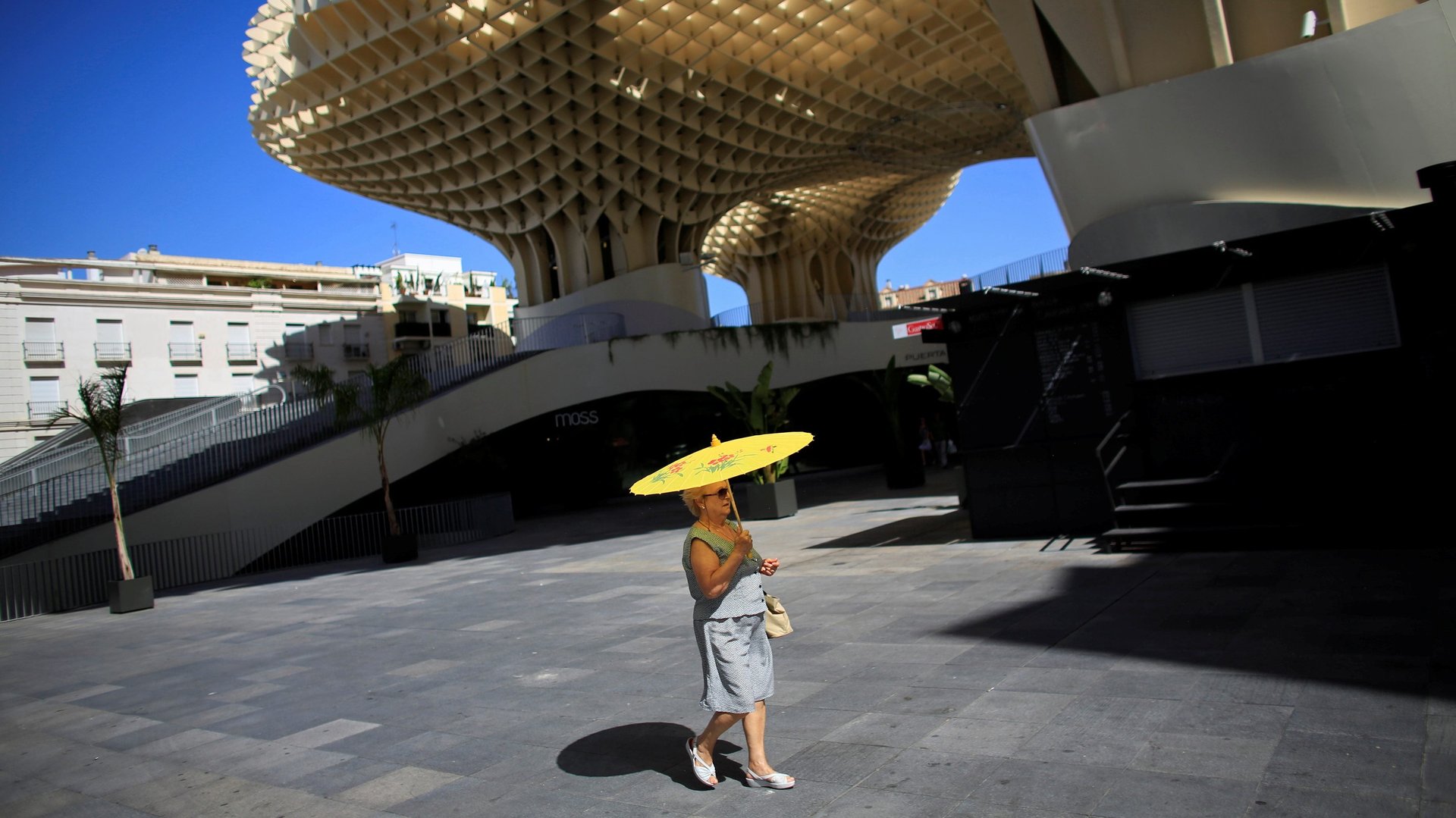A city in Spain will begin naming heatwaves
As deadly heatwaves become a worsening threat to populations around the world, one city in Spain is taking action to recognize them as the natural disasters they are—by naming them.


As deadly heatwaves become a worsening threat to populations around the world, one city in Spain is taking action to recognize them as the natural disasters they are—by naming them.
Juan Espadas, mayor of Seville, Spain, announced on Oct. 18 that his city will become the first in the world to give heatwaves official names and categorization, much like hurricanes or blizzards in other parts of the world.
“Seville and Andalusia are territories that are particularly threatened by the consequences of climate change,” Espadas said at a press conference with the Atlantic Council, an American think tank.”We are working to inform citizens about how to be prepared for extreme heatwaves. They will know the level of risk, the level of intensity, so that they will know how to face them.”
This new naming and categorization framework is part of a larger project to study heatwaves that Seville is undertaking with help from the Atlantic Council’s Adrienne Arsht-Rockefeller Foundation Resilience Center and in partnership with several local universities. Climatologists and public health officials will conduct research on heatwaves and the health risks they pose in order to come up with a classification system expected to be implemented by the summer of 2022.
Seville, which is located in the southwestern part of the Iberian Peninsula, experiences extreme heat regularly: 60% of days (pdf) in July and August are about 35ºC (95ºF), and 25% are above 38ºC (100.4ºF). This past August, the region approached national records with a heatwave that sent temperatures soaring past 46ºC (114.8ºF).
Heatwaves are a growing threat to cities
Extreme heat is deadly everywhere, but especially in Europe, where heatwaves kill more people each year than anywhere else. In 2018, 104,000 elderly people across Europe were killed in heatwaves, more than a third of the global total.
In cities, the effects of heat are made worse by the urban heat island effect, wherein concrete building materials, sparse tree cover, and heat from energy use work together to make surface temperatures even higher. Cities in historically warmer climates have over centuries developed strategies for dealing with heat, such as building with light-colored and cooling materials, and structuring work to avoid the hottest times of the day.
But as climate change makes heatwaves more intense, even these places are struggling to adapt to what may become the new normal. In August, a town in Sicily experienced what is perhaps the hottest temperature ever recorded, at 48.8ºC (120ºF), in a heatwave that led to blackouts and caused snails to burn in their shells.
And now more places historically unprepared to deal with heatwaves also are facing them—the massive heatwave that rolled across the western US and Canada in June was by far the worst the region had ever experienced.
Cities are doing their best to respond to this growing threat by instituting adaptive plans for the long term. Local governments are doing everything from increasing urban tree cover to appointing chief heat officers. Seville’s plan to raise public awareness of heatwaves by naming and classifying them is yet another strategy to live with extreme heat.